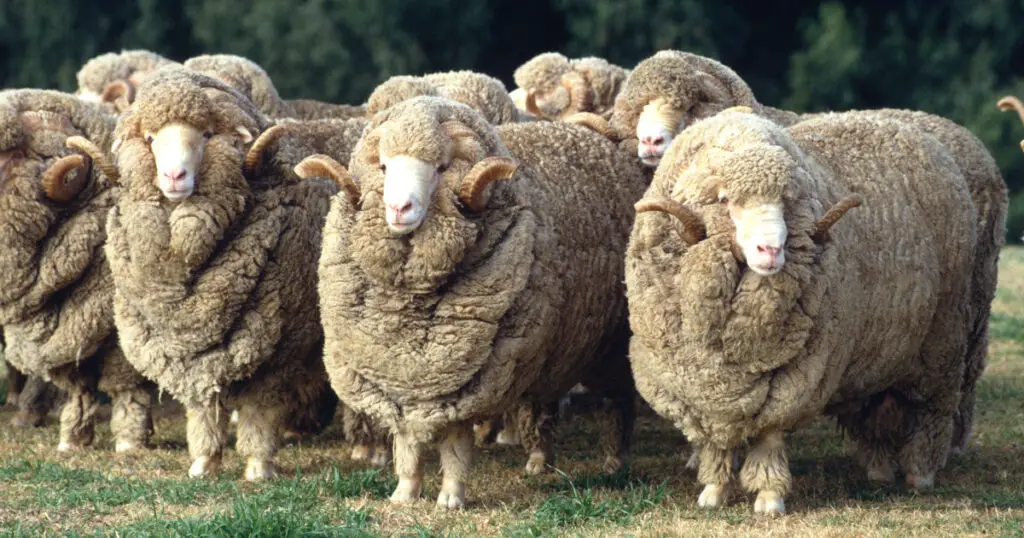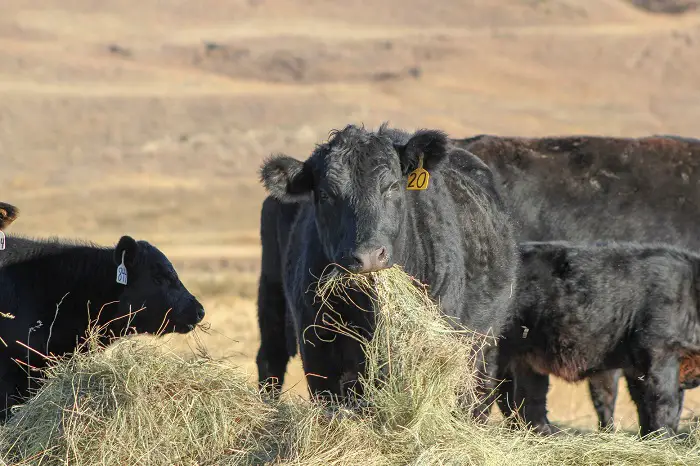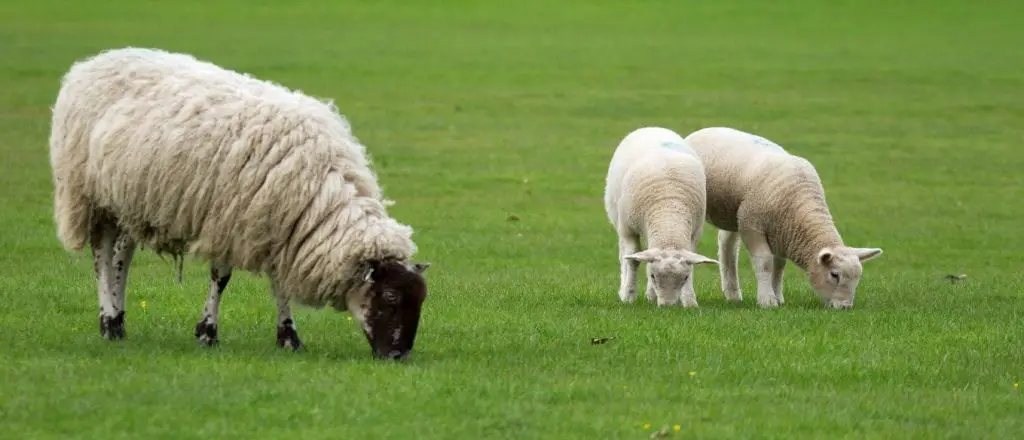Sheep have been domesticated by man since the dawn of time about 10000BC and have been a part of our lives ever since. Sheep are raised primally for meat, wool, and sometimes milk across the world with lamb meat and sheep wool among the most highly-priced animal products. Wool can be made from hair from goats, sheep, and rabbits but sheep produce the largest quantity of wool. Although most sheep breeds can produce wool, the finest wool is produced by the merino sheep or seep related to this breed of sheep.
Contents
What is wool?
Wool is an animal fiber that is mainly obtained from the hair of domestic mammals like sheep, it is different from plant fiber in that it is made up of protein and not cellulose. Wool is used for making different items ranging from clothing, linen, and even carpets depending on the wool’s coarseness, length, and crimp. Crimp is the natural wave of the wool fibers, which helps to make wool spinning easier as individual fibers can stick together easily when there is more crimp. Wool has superior thermal insulation abilities which makes it a good material for retaining heat. Fine wool is used mostly for making clothing items most of which are highly valued compared to those made from synthetic fibers or courser wool.
Fine Wool Sheep Breeds
The finest sheep wool comes from the merino sheep and crosses of these sheep with other sheep breeds. The fineness of wool is determined by the amount of crimp that the wool has and merino sheep averages 40 crimps per centimeter while course wool can have less than one crimp. Fine wool sheep breeds are raised predominantly for their ability to grow a dense, and fine fleece. On average one sheep can produce approximately 4.5kg of wool which is enough to make six sweaters or about 10 meters of fabric. Although sheep wool prices have been falling worldwide due to the raise in the usage of synthetic wool the price of garments made from sheep
Merino and Crosses
The merino is the most widely produced breed of sheep across the world, especially where sheep are produced commercially. The merino apart from producing wool is also a good meat type sheep making it a dual-purpose breed, its blood can be found in most commercially produced sheep breeds.
Merino
The merino as previously mentioned is the backbone of the world’s wool production producing the bulk and best quality wool in the world. This breed or group of breeds of fine wool sheep originated in Spain, subsequently spreading to the rest of the world. Because of their fine wool, these sheep were treasured by the Spanish who tried to maintain a monopoly on the breed going to extent of executing anyone who tried to export the breed. Most merino wool comes from Australia suitable for making baby wear and other fine garments as it has a fineness of about 17 to 22 microns
American Cormo
The Cormo is a small sheep that originated in Tasmania, Australia where they were better adapted to cold and wet conditions than the merino. These sheep are relatively easier to raise in many climatic conditions with excellent mothering ability. The American Cormo is a crossbreed of the Lincoln, Saxon merino, and Australian Cormo. The American Cormo produces long white wool that has roughly the same fineness as merino at 17 to 23 microns and can be used in delicate items of clothing.
Delaine-Merino
This is a medium-sized fine wool sheep breed commonly found in the United States which can thrive in many climatic conditions and feed on a wide variety of forages. The Delaine- Merino however produces a bit less wool than the Merino because it does not have wrinkles in its skin meaning it has a smaller surface area. The wool has fineness characteristics similar to that of the original Merino.
Rambouillet
The Rambouillet also known as the French Merino is a descendant of the original Spanish Merino which was raised by the French King Louis XVI after he bought 300 of the original Spanish Merinos. These sheep were then crossed with some English long wool breeds to produce a bigger breed with similar wool characteristics to that of the Merino.
Specialty Breeds
These breeds also have fine wool but are not ideal for commercial production and are mostly raised by hobbyists or farmers with a specific market.
Shetland
This is a small breed of sheep from Scotland and remains an unimproved breed, which is hardy and can thrive on a very plane of nutrition for a long time. Shetland sheep produce fine wool in a wide variety of colors, more than ten, unlike other sheep breeds, with the colors also appearing as patterns on the sheep.
Romney
Another lesser known fine wool sheep breed is the Romney, which originated in England, this a very hardy breed adapted to wet and cold conditions. Romney wool is naturally either white or red and ideal for hand spinning. Romney wool has a micron diameter of 32 to 39 and the sheep can be shown all year round.
Conclusion
Fine wool sheep breeds mostly originate or are closely related to the merino sheep breed that originated in Spain in the Middle Ages. Because for a long time, the Spanish had a monopoly on the fine wool merino other breeds available in Europe and other parts of the world were crossed with the merino to produce breeds that had wool close to that of the Merino. There are other sheep not related to the merino like the Romney and Shetland that are also renowned for producing fine wool but these are mostly raised for specialty wool or to be blended with other wools. Fine wool sheep breeds are raised to produce fine fleece with wool that can be spun into fine garments like baby wear or sweaters worn close to the skin. Wool prices across the world have been falling but there are still markets for fine garments made from the finest sheep wools.




